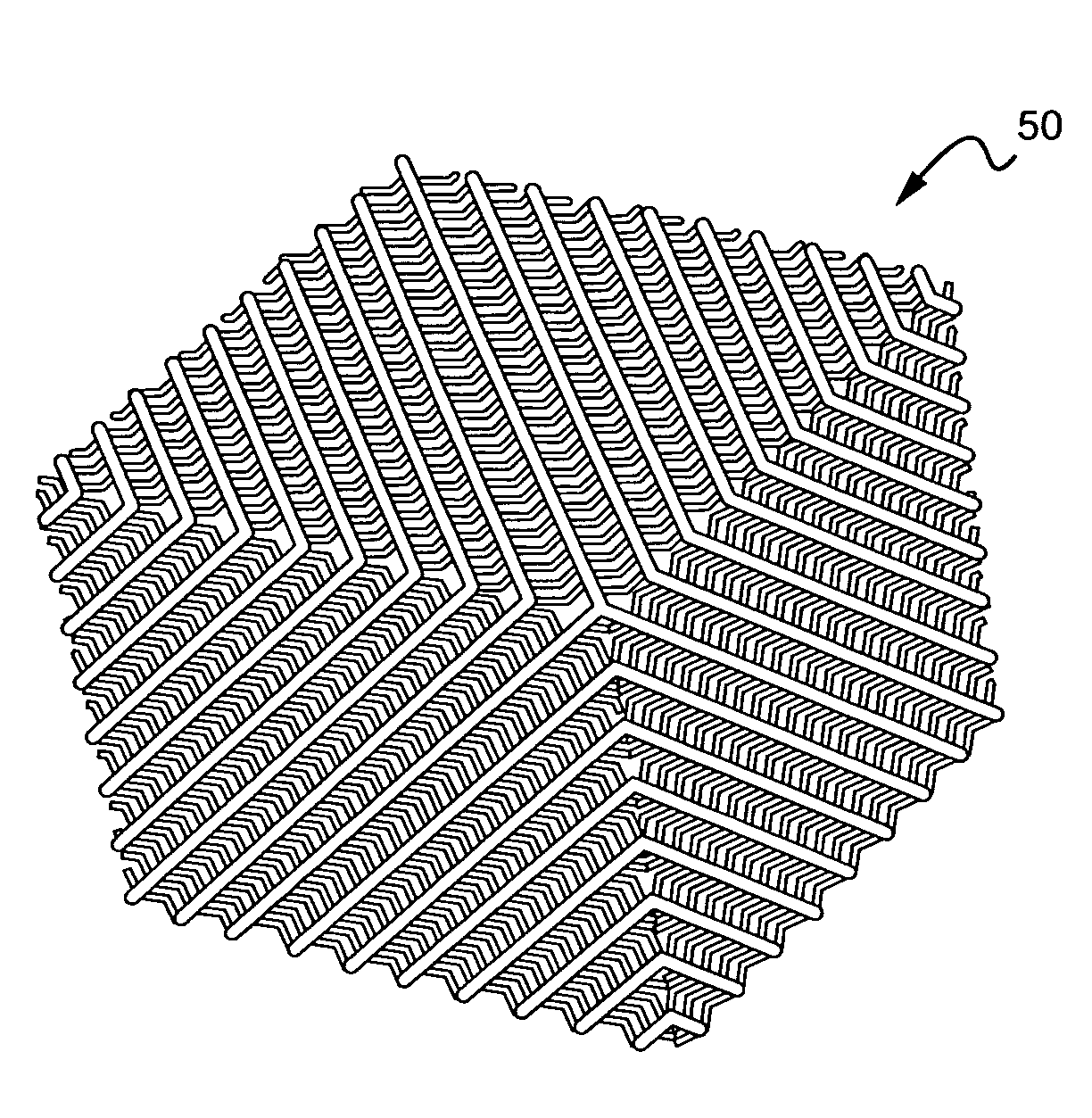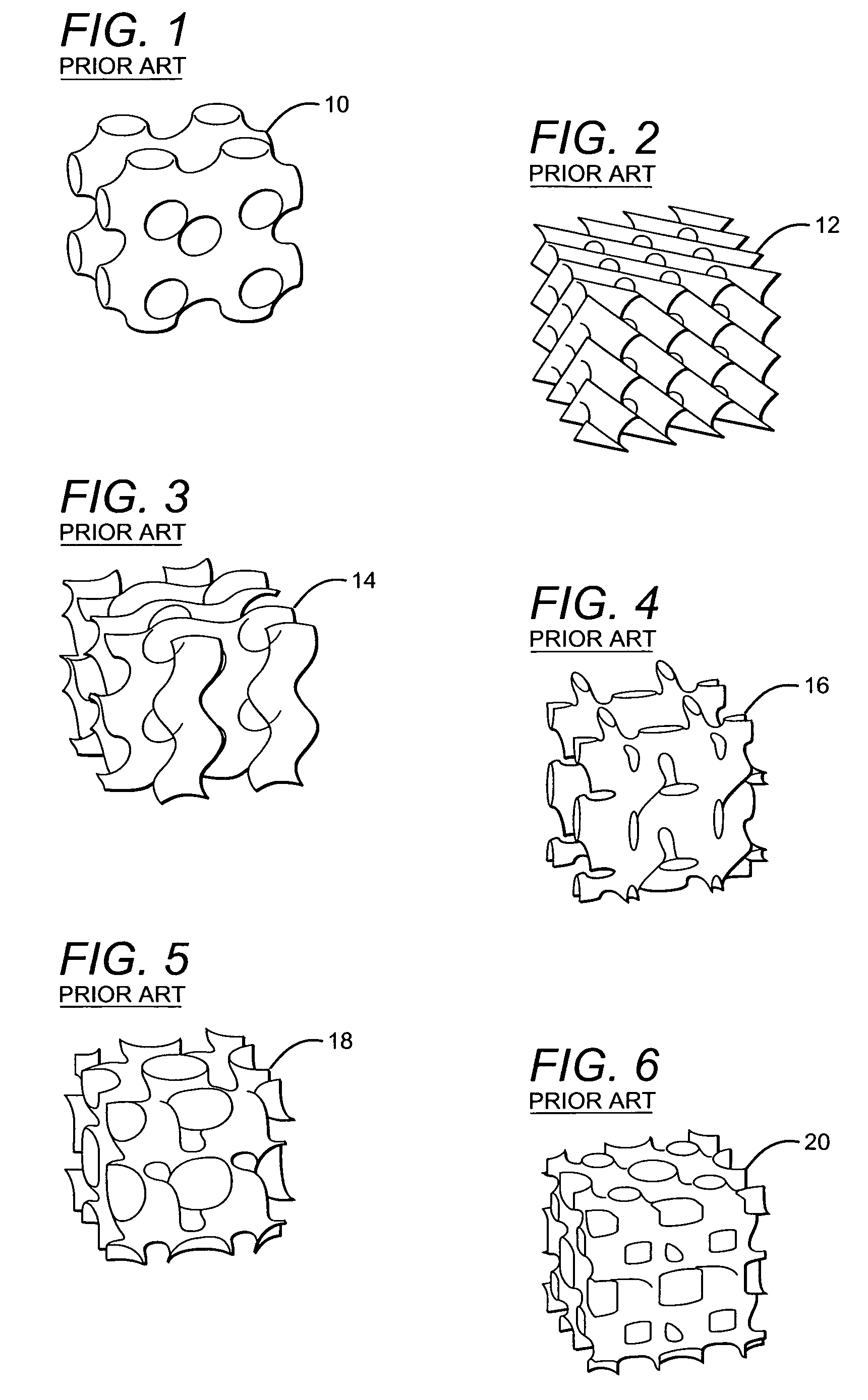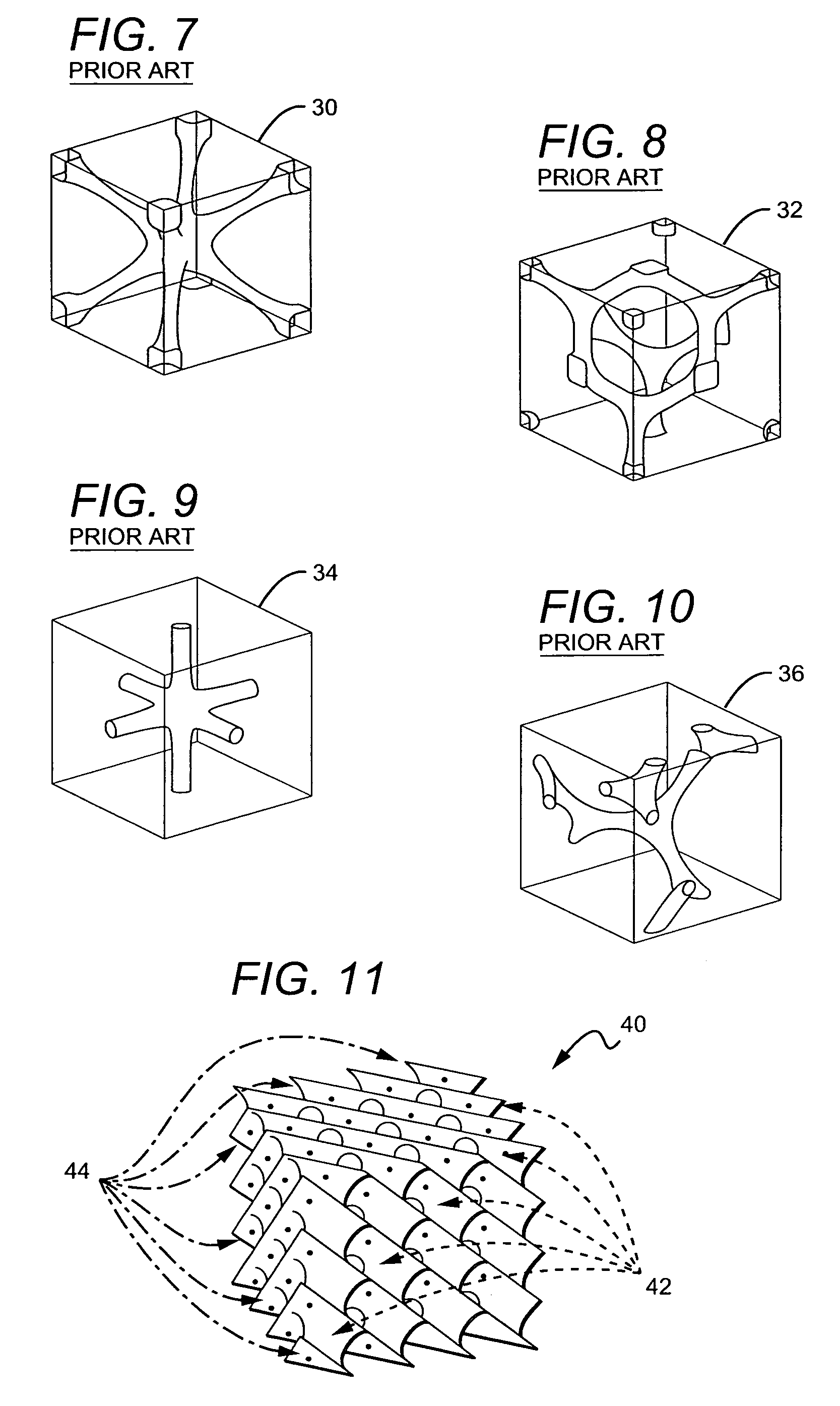Method of using minimal surfaces and minimal skeletons to make heat exchanger components
a technology of heat exchanger components and skeletons, which is applied in the field of using minimal surfaces and minimal skeletons to make heat exchanger components, can solve the problems that none of the known methods provides all of the numerous advantages, and achieve the effects of reducing manufacturing costs, improving efficiency, and reducing the amount of materials or walls
- Summary
- Abstract
- Description
- Claims
- Application Information
AI Technical Summary
Benefits of technology
Problems solved by technology
Method used
Image
Examples
Embodiment Construction
Embodiments of the invention now will be described more fully hereinafter with reference to the accompanying drawings, in which some, but not all embodiments of the invention are shown. Indeed, several different embodiments may be provided and should not be construed as limited to the embodiments set forth herein. Rather, these embodiments are provided so that this disclosure will be thorough and complete and will fully convey the scope of the invention to those skilled in the art. Like numbers refer to like elements throughout.
Referring now to the figures, FIG. 1 shows a first embodiment 10 of a prior art minimal surface core component of a heat exchanger. FIG. 2 shows a second embodiment 12 of a prior art minimal surface core component of a heat exchanger. FIG. 3 shows a third embodiment 14 of a prior art minimal surface core component of a heat exchanger. FIG. 4 shows a fourth embodiment 16 of a prior art minimal surface core component of a heat exchanger. FIG. 5 shows a fifth em...
PUM
| Property | Measurement | Unit |
|---|---|---|
| thickness | aaaaa | aaaaa |
| thickness | aaaaa | aaaaa |
| width | aaaaa | aaaaa |
Abstract
Description
Claims
Application Information
 Login to View More
Login to View More - R&D
- Intellectual Property
- Life Sciences
- Materials
- Tech Scout
- Unparalleled Data Quality
- Higher Quality Content
- 60% Fewer Hallucinations
Browse by: Latest US Patents, China's latest patents, Technical Efficacy Thesaurus, Application Domain, Technology Topic, Popular Technical Reports.
© 2025 PatSnap. All rights reserved.Legal|Privacy policy|Modern Slavery Act Transparency Statement|Sitemap|About US| Contact US: help@patsnap.com



